
Eight William & Mary undergraduates are engaged in a unique new research program led by VIMS that combines classroom experience with summer internships across the globe.


Eight William & Mary undergraduates are engaged in a unique new research program led by VIMS that combines classroom experience with summer internships across the globe.

Two environmental initiatives at William & Mary received funding in the latest round of grants from the Virginia Environmental Endowment.

The Future of Fusion Energy: How Just a Few Grams of Seawater Could Supply Megawatts of Energy

William & Mary is among the most environmentally responsible colleges in the country, according to a report published today by The Princeton Review.

The Center for Conservation Biology has become part of an initiative to develop wind farms off Virginia’s coast.

A new light harvesting “stained glass” could solve the world’s energy crisis while decreasing carbon emissions.

Using algae as an energy source may curb our appetite for fossil fuels while also saving our waters.

Cornwallis sank as he died, making a couple of revolutions on his way down, finally ending belly up and flippers akimbo, making a sort of “whale angel” on the ocean bottom.
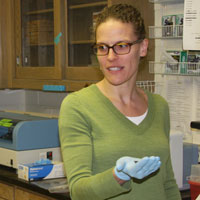
Dorothy Ibes, the newest Mellon environmental postdoctoral scholar, will teach a spring semester class in science communications, an experience that she hopes will bring some of those stories to light.

First-ever W&M Sustainability Summit draws nearly 70 faculty, staff and students and generates ideas and partnerships.
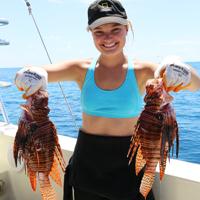
When Erin Spencer, an ecology major and marine science minor, began to brainstorm ideas for a senior honors thesis, she knew immediately that she wanted to study lionfish.
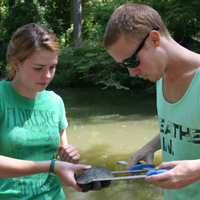
A wetland ecosystems class caught turtles on Sept. 4 as part of part of a larger initiative. The Ecological Research as Education Network includes turtle censuses from 25 other schools in the United States.

Charlie Maloney's class on sustainability and agriculture gives students theoretical and practical knowledge.
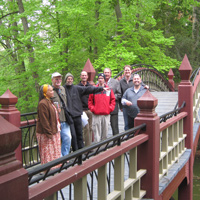
The thing that looks like someone tossed a dirty mattress into the upper reaches of the Crim Dell pond is actually a floating artificial wetland, designed to help clean excess nitrogen from the water of the campus landmark.
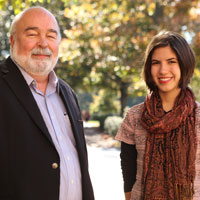
William & Mary’s Commonwealth Center for Energy and the Environment has launched its first round of projects, which have an emphasis on the effects of the rise of sea level.
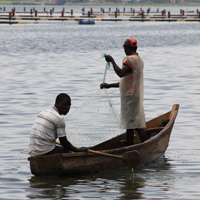
A team of W&M researchers help Ugandan scientists prepare for a promising but uncertain future.
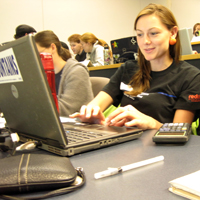
Students in William & Mary’s Watershed Dynamics class convened in the basement of Tyler and assumed the virtual roles of stakeholders —land developers, farmers, watermen, and local regulators—to simulate the challenges inherent in Chesapeake Bay management.

In 2010 Jes Therkelsen begins a two-year residency on campus, teaching and experimenting with how scientists can use visual communication to better publicize their work.

Our most recent grant supporting the Environmental Science program comes with a matching requirement. We're seeking $1.6 million in private funding earmarked for the new postdoctoral program.
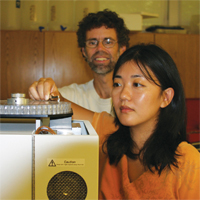
William & Mary's interdisciplinary environmental program is expanding, thanks to a new post-doctoral fellowship program.

From its base in the power center of Washington, D.C., the Global Environmental Governance Project engages the tough problems surrounding international environmental institutions and laws.

A number of researchers converge on a way to take algae and make it into fuel on an industrial scale.

My passion for the marine environment and its conservation was central to my decision to pursue a degree in Biology and Environmental Science at William and Mary.

An occasional leech comes with the territory when you're studying leaching and other aspects of stormwater retention, as does the occasional incident of equipment tampering.

My name is D. Gabriel Kauper. In 2003, I co-founded the W&M Farmers and Gardeners Club for the purpose of forming a community of botany, nature and food enthusiasts to work regularly at local farms and pool our interests for other projects.

Water runs under the bridge at Crim Dell, then where does it go? And what's in that water, anyway?

Political borders always struck me as artificial divisions given the interconnectedness of our global environment.

From 1929-1950 liquid mercury leaked into the South River as it meandered through an industrial section of Waynesboro, near Charlottesville, Virginia.

I've often heard the statistics about the large percentage of college graduates whose careers are unrelated to their undergraduate majors.

You know you have reached Tumo Tumo, a small agricultural town in the foothills of Mt. Kenya, when the crude paved road turns into a sticky clay path and the van driving you to your destination slows to a crawl in an attempt not to veer off the steep winding road to the valley below.

During the summer of 2008, a team of four William and Mary students explored U.S. Environmental Leadership.

As an Oregonian whose research focuses on the American West and modern American Indian history, I never imagined I would end up teaching in Tidewater, Virginia.

The grant, to the Environmental Science and Policy Program, funds two innovative programs and comes with a matching requirement.

My motivation to attend William & Mary can be summed up in an image: a short, balding man with a dry sense of humor and a passion for all things feathered - Dr. Mitchell Byrd. His mentorship became one of the many benefits garnered in my four years at W&M.

Nothing is as charismatic as a bluebird, that nearly universal symbol of happiness and well being.